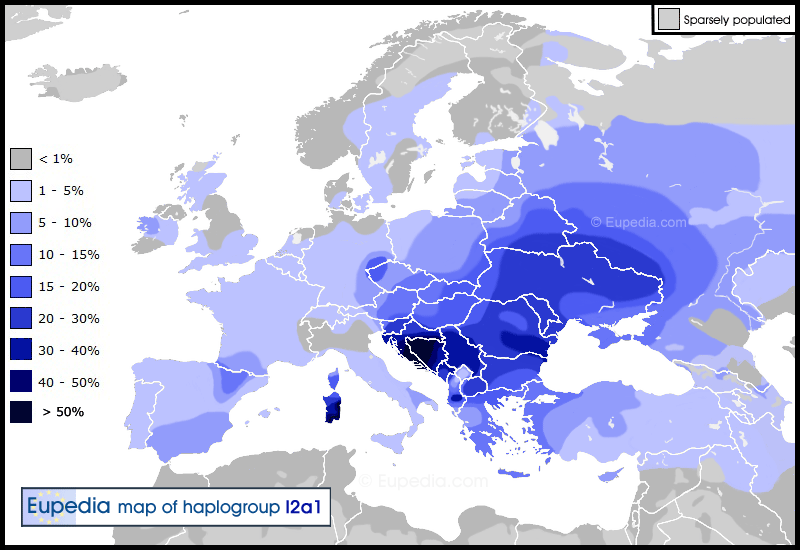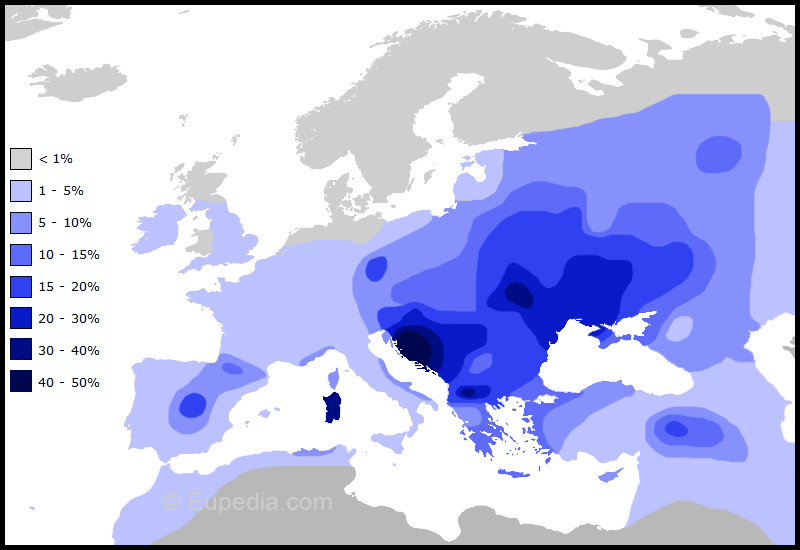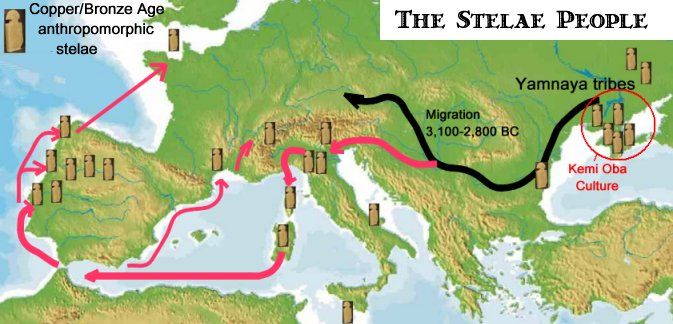Hi adeof. I can agree with you about I2a which I was calling cromagnoids, The genuine european natives before the IE migrations, it is a branch of "I" haplogroup fully originated in Europe. But when you talk about celts and celtiberian you must to notice that these terms were for people whose had lived lots of time after we are talking, I'm talking before Bronze age. Celtiberian is a confusing term, because it is used to call at modern spaniards as an ethnic group, but still is used for the celts which came from central Europe and were mixed with iberians (Example the city of Numancia, near Soria, Castilla León. They were celtiberians). In the peninsula had living together, the celts that never gone out (in the west), and the celts from central Europe (in the north east of Iberia) whose indeed returned to home. I'm proposing That R1b(M343) had originated in the Iberian peninsula from M173.
That you say about I2a have sense, there are a noticiable link in Sardinia, as the Kurgan Stelae people use sardinia as bridge to Iberia. Maybe Stelae People brought M-173 to Iberia?





